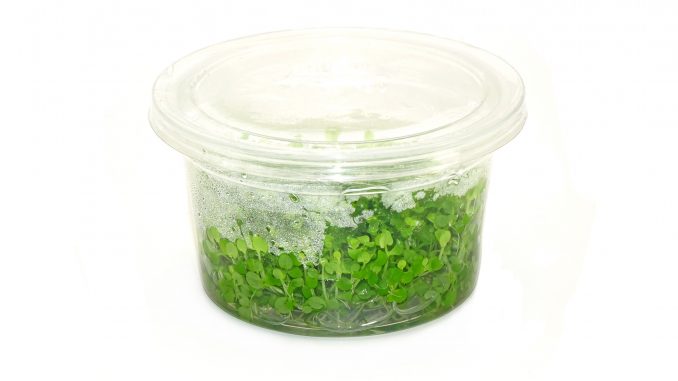
The Monte Carlo plant is a great aquatic carpeting plant. It grows easily and creates a beautiful aquascape that will really create a lush ambiance in your home aquarium. You can grow it along the bottom substrate and then use clippings or daughters to hang over rocks, creating a nice cascade.
As long as you trim it regularly and appropriately for the tank you have, you’ll be happy with the foreground aquascaping that this plant creates. In this article, we will discuss all the important facts about Monte Carlos, including how to plant and care for them, the benefits of Monte Carlos, and how to enjoy them as a helpful addition to your community tank.
TABLE OF CONTENTS
Monte Carlo Plant Facts & Overview
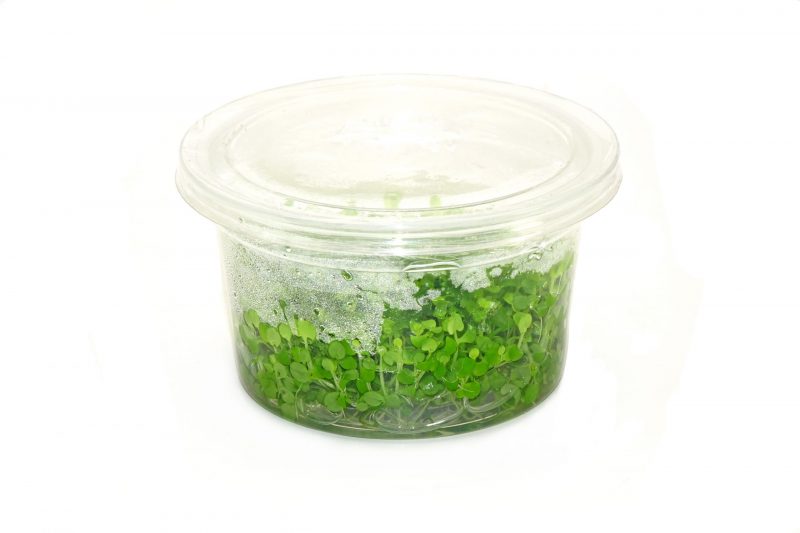
| Category | Rating |
| Care Level: | Easy to medium |
| Lighting: | Moderate |
| Color Form: | Green (light to medium) |
| Placement: | Foreground |
| Height: | 1-2.25 inches |
| Family: | Linderniaceae |
| Minimum Tank Size: | 5 gallons |
| Propagation: | Cuttings, Splitting, cutting off daughter plants |
| Tank Set-Up: | Freshwater |
Monte Carlo is not just a city in Monaco; it’s also the city in northeastern Argentina where the Monte Carlo plant was first discovered by the Japanese. The Monte Carlo, scientific name Micranthemum tweediei, is a carpeting plant that is also called Bacopita, Montecarlo pearlweed, New Large Pearl Grass, and Tweedie’s pearlweed.
The Monte Carlo plant creates a soft mat across the substrate as it grows laterally, showing off its small, rounded leaves and intense green color.
As long as you offer the Monte Carlo plant medium to bright light and some fertilizer, this aquatic gem will thrive. If you take some clippings from the carpet and replant them on an elevated substrate, you will enjoy the drape of the loose shoots.
Micranthemum ‘Monte Carlo’ is a carpeting plant that is typically used by aquarists to achieve lush foreground cover. It is a low-growing plant with bright green, rounded leaves. It will creep laterally along the substrate as it grows along and can also be used overhanging on decor or rocks.
Habitat of Monte Carlo
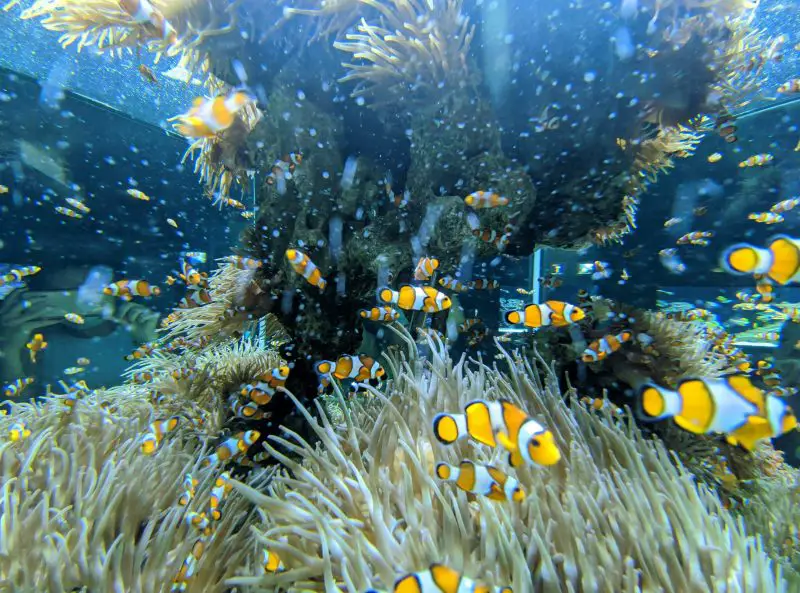
Monte Carlo is found throughout South America and originated in Argentina. You will find it along the banks of streams and rivers and in marshes.
In the home aquarium, it thrives in a variety of tanks, from nano to medium and even large tanks.
Appearance
With a light to medium green hue, the Monte Carlo plant is appealing to look at. It grows from 1-2.25 inches, or 3-6 cm, in height, with round leaves that are 0.2 to 0.4 inches (5 to 10 mm). This plant is a runner that creates dense carpets along the substrate.
It has long, tiny roots and long stems that creep and have tiny white flowers at the end.
Benefits of Monte Carlo
The Monte Carlo plant is more than just a pretty face; there are a number of reasons it is a good choice for your aquarium:
- Adapts to a variety of tank conditions
- Offers refuge for shrimp and fish fry
- Requires little care
Habitat and Tank Conditions
Monte Carlo plants are adaptable to different tank conditions, but you want to make sure to stay within the water parameters and provide proper conditions so that your plants grow as they should.
Read related: Bucephalandra Care
Tank Size
Monte Carlo plants do well in tanks of varying sizes, including nano, medium, and large. Because these plants are runners that carpet the substrate, they do take up a certain amount of room, so you want to make sure to have at least a 5-gallon tank, about 20 liters.
Of course, the larger the tank, the more room the Monte Carlo and all the aquarium residents will have, so if you can swing 10 or 20 gallons, or even bigger, you’ll open up a lot of space for these plants.
Water Conditions
You should perform regular water checks to make sure that your aquarium meets the following recommended parameters:
- Temperature: 68 to 77 °F (20 – 25 °C)
- pH: 6.0 – 7.5
- Hardness: up to 15 GH, so they can handle both hard and soft water
Lighting
For optimal growth, Monte Carlo plants need moderate to high levels of light. Be sure to consider the light needs of all your aquarium residents to make sure that this is appropriate for everyone in the tank.
Substrate
Choose a fine-grain substrate for best results with your Monte Carlo plant. A small-grain substrate will also work.
Fertilizer
Although CO2 is not essential, you can add some every so often to spur growth and thicken the carpet. You can also use a liquid fertilizer designed for planted aquariums.
Planting Monte Carlo
One or two potted Monte Carlos should be enough to get you started if you have a 5- to 10-gallon tank.
Be sure to quarantine your Monte Carlo plants before adding them to an established aquarium, as they can carry disease or toxins into your tank and harm your fish. The same is true for introducing any other plants or fish into your aquarium: all newcomers should be quarantined to protect the group.
Growth and Propagation
To cultivate a Monte Carlo plant, after quarantining and cleaning, divide the plant into small pieces (maybe 8 to 10). Insert each one into the substrate with a pair of tweezers. You don’t need to go all the way down, but you should make sure they are planted deeply enough that they will not come out.
They will soon form roots, and you will not have to worry about the plants coming out of the substrate.
Regular trimming will help your Monte Carlo plant grow quickly and also prevent overgrowth. You can either replant the trimmings or dispose of them. If disposing of them, add to your compost bin, bury them, or dissolve them in bleach. If you just toss them, they might crop up in waterways and sewers, creating blockages.
If you are looking to achieve the sought-after low and dense carpet, make sure the lighting is sufficient, or the stems may just grow longer as they reach for the light source. This is not a phenomenon unique to the Monte Carlo plant; other aquatic plants such as the Dwarf Sagittaria will respond similarly to a lack of light.
Issues to watch out for with Monte Carlo plants:
Melt: If nitrite levels are too high, Monte Carlo plants may melt soon after you plant them. Perform a water change to prevent further melting.
Brown plants: If your Monte Carlo plants turn brown, it is an indication that the base of the plant is not getting enough light. This can happen when the mat is so thick that light can’t get through. Try trimming your plants so that light can get through. Remember that light is nutrition for plants.
Detachment: When you first plant Monte Carlos and they have not had enough time to grow roots and attach to the substrate, they may come up out of the substrate. The solution for this is easy–just push them back in a little more deeply and wait for the roots to grow and secure them.
Tank Mates
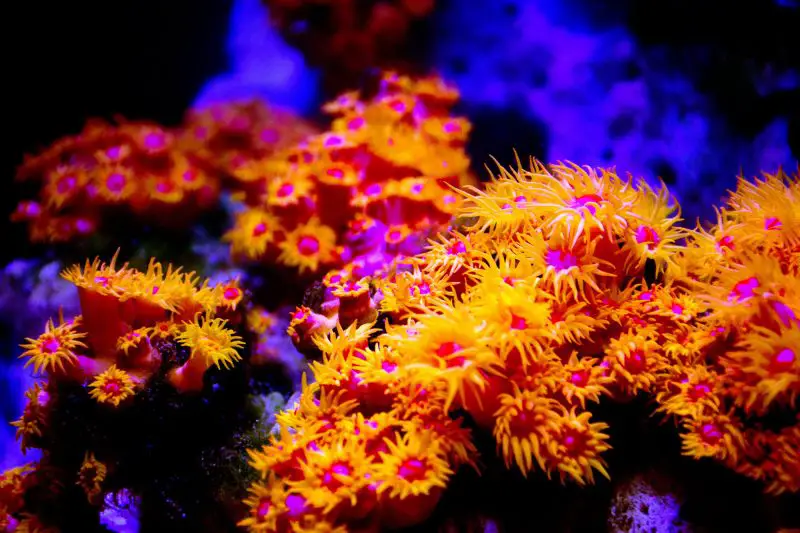
Suitable plant mates for Monte Carlos include:
- AR Mini
- Italian Val
- Rotala Indica
- Water Wisteria
Suitable tank mates for Monte Carlos include:
- Shrimp
Non-aggressive fish such as
- Cardinal Tetras
- Clown Loach
- Mollies
- Neon Tetras
- Rasbora Hets
Care and Maintenance
Once you plant your Monte Carlo plants in the substrate, you can expect to see the carpets form in one to two months. You should trim the carpet every other week, or more if it looks like it is taking over the tank.
The first time you trim your Monte Carlo, it will take a lot longer than the upkeep trims. Using trimming scissors, trim your plants down so that they are a little less than half an inch above the substrate.
Make sure that you do not leave the trimmed pieces in the tank, for they will dirty the aquarium and increase ammonia levels, which can be harmful to other members of the community.
Also, remove any unhealthy or dead plants from your aquarium so that they do not harm the other plants; you can check for these situations as you are doing the trimming.
Is Monte Carlo Suitable for Your Aquarium?
Monte Carlo plants really create a lush aquascape in your community tank. It adds to the ambiance of your hobby when you look in and see a rich carpet running across the tank bottom. If you are willing to do the work of regular trimming, your effort will certainly have a significant payout, and you and your community members will enjoy the Monte Carlo plant.
Do Monte Carlo plants sound like a great idea for your community tank? Tell us what you think in the comments–we would love to hear your thoughts!
See related: Bacopa Caroliniana Care

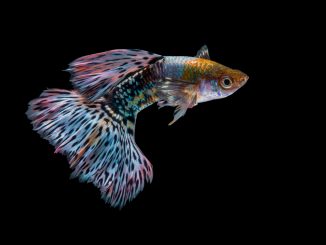
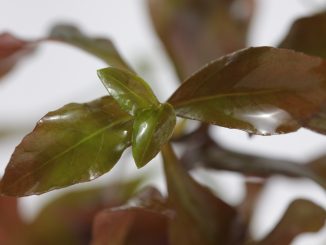
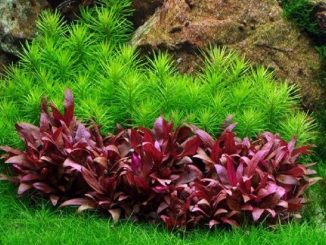
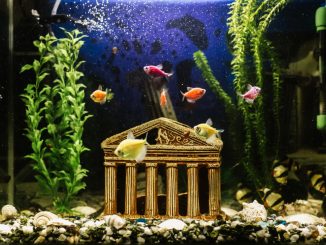
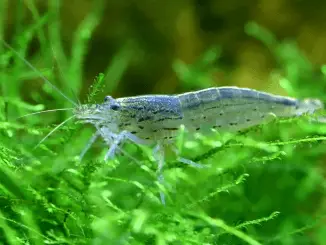
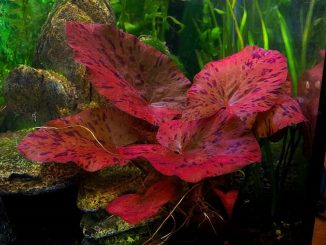
Thanks so much for the info! I have some Monte Carlo in a tank that’s been going for three months and the leaves have brown around the edges. My light is on six hours a day and I have CO2 and aqua soil. Do you think the leaf edges are going brown from too much fertiliser? Or do you think it’s brown algae? My other plants are completely fine though
Even with CO2, 6 hours is pretty short period to have lights on. You may want to increase the light time and see if that helps. With nutrition in the substrate and CO2, you would see algae in other placed too, not just on M.C.
So glad I’ve found this wealth of great information on aquarium plants!